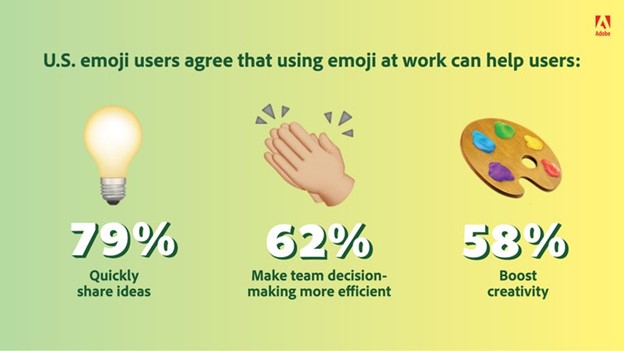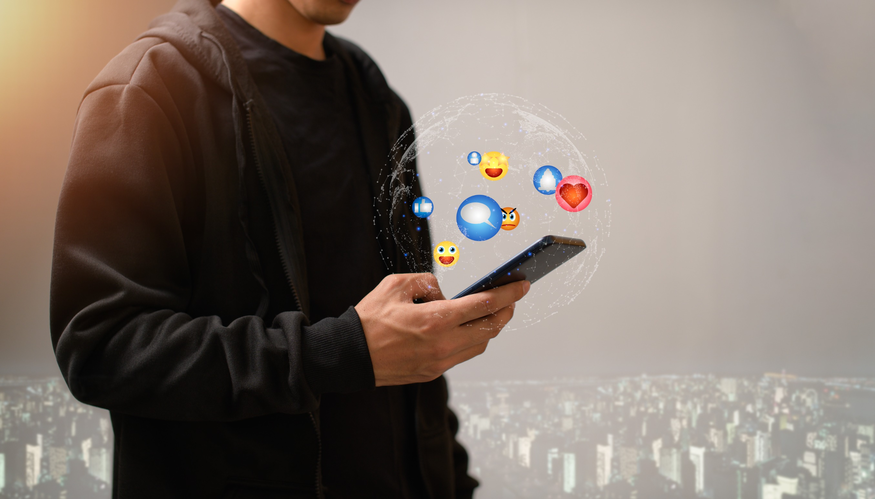Emoji confusion. If you have a teenager, you know. There’s a generational divide regarding digital communication at work, too. Did you know that to those born after 1996, a thumbs-up emoji can be viewed as passive-aggressive, and a smiley face can be condescending?
The Skinny on Emoji Confusion
Axios brought the topic of emoji confusion to our attention, pointing to eye-opening studies like this one from Loom that found 91% of workers feel their digital messages have been misunderstood or misinterpreted. Let’s go back to the thumbs-up emoji as an example since it’s so common. Axios points to this Reddit thread discussing the generational divide about the simple response:
“For younger people (I’m 24 for reference), the thumbs-up emoji is used to be really passive-aggressive. It’s super rude if someone just sends you a thumbs-up,” explains Reddit user HuaAnNi. “So yeah, it’s a generational communication culture difference. Everyone my age in the office doesn’t do it, but the gen X people always do it. Took me a bit to adjust and get out of my head that it means they’re mad at me…Idk if you’ve ever seen text screenshots people post where they reply to this whole message with a thumbs up, it’s definitely a not-nice thing, and it is usually a response if the other person is being rude or annoying or stupid.”
The Wall Street Journal dove right into the topic of emoji confusion last year, reporting that the rise of emoji use at work, such as between remote teams during the pandemic, has created more misunderstanding than ever. WSJ talked to Erica Dhawan, the author of “Digital Body Language: How to Build Trust and Connection, No Matter the Distance,” who explained that people over 30 generally use emojis to convey what the images always did, while younger “digital natives” might ascribe sarcastic meanings to them, or use them as shorthand for something entirely different than the emoji’s literal meaning (cue the inappropriate eggplant).
So, No Emojis?
We highly recommend reading the Axios and Wall Street Journal articles about emoji confusion to get a better read on your own possible emoji discretions. But don’t linger on what you’ve done in the past. What’s done is done.
Do emojis have any use in the workplace? Some still say yes. Slack and Duolingo paired up to discover that 58% of workers surveyed say using emojis at work allows them to communicate more nuance with fewer words. Perhaps just as important, 54% think emoji use can speed up workplace communication, especially among globally distributed teams. Adobe’s Future of Creativity: 2022 U.S. Emoji Trend Report found this out:

But even then, as Slack points out, “the same emoji can mean multiple things to multiple people, and their meanings can be more subtle and contextual than we think.”
It’s a confusing area, for sure. Even experts get it wrong. This recent Harvard Business Review article is a terrific example. It extols the virtues of encouraging workers to express themselves through emojis, calling out the “thumbs up” an unproblematic icebreaker (um, we know better now).
So how can you find out if emoji usage is helping or hindering your workplace communication? If you’re in a management position, why not just ask?
Emoji confusion can indicate that a more significant workplace culture problem may be at play. Employee pulse surveys can uncover those hidden resentments and misunderstandings among the ranks and generations within your workforce. Experts like The HT Group Executive Advisor Heather Ball can dig even deeper to help organizations overcome possible emotional intelligence (EQ) weaknesses that can be indicated by silly things like emoji confusion (but point to more serious workplace culture issues).
And as a worker, it’s important to simply be aware that emoji confusion is common and that the meaning you assign to emojis may not be the same as how others perceive them. Give some added thought before using them, and award others extra grace before reacting to them.




